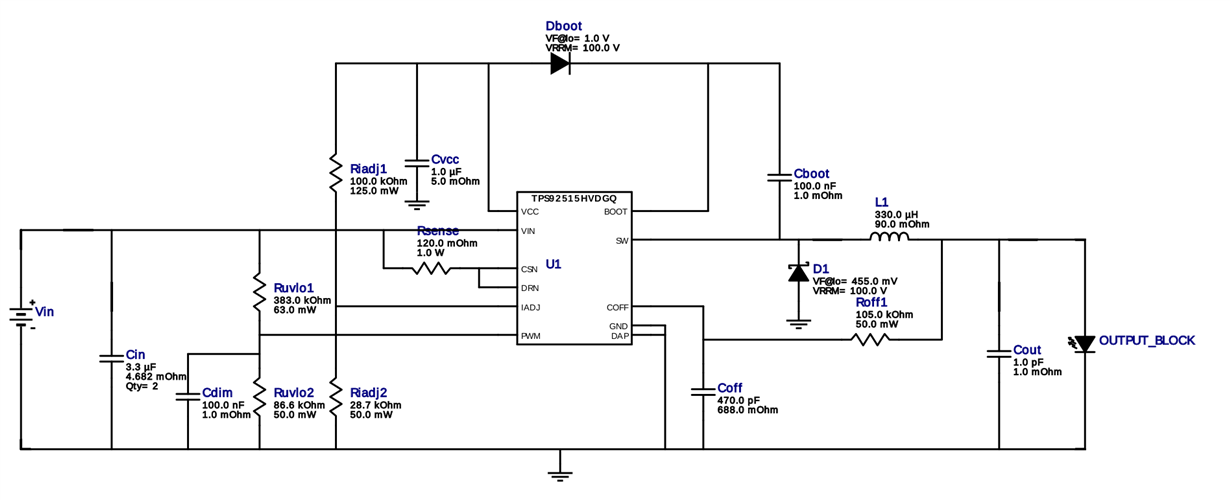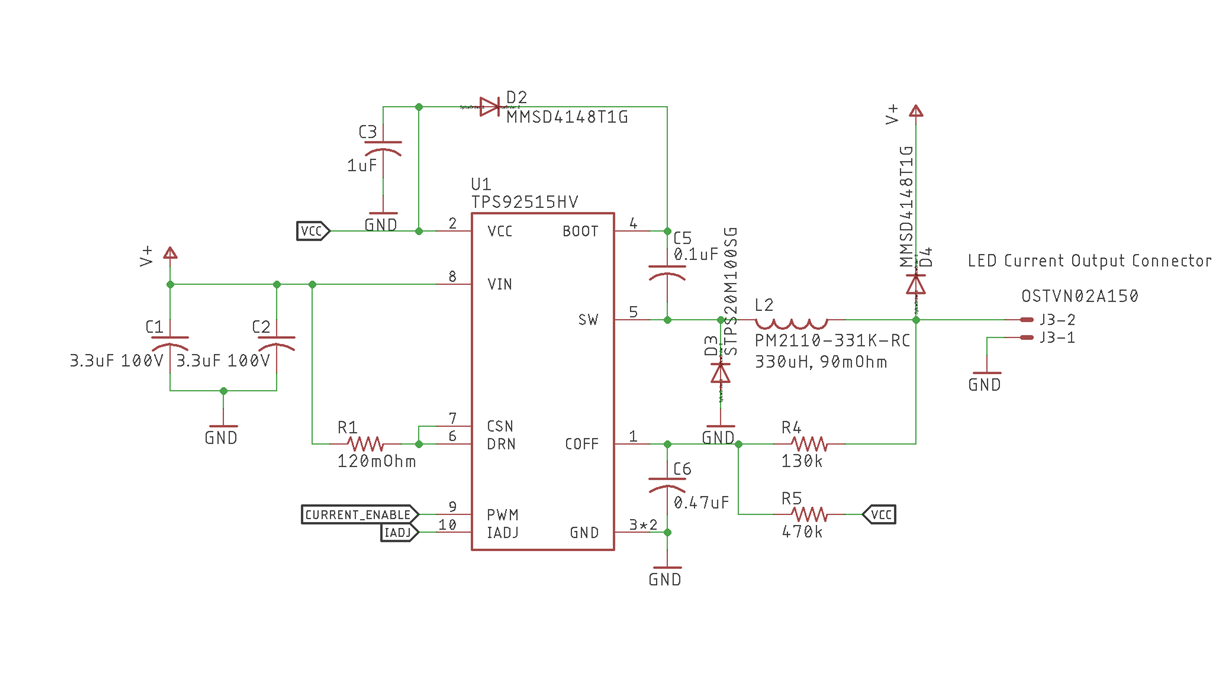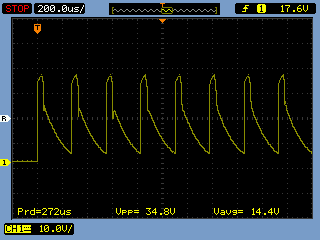I'm having an unusually large amount of trouble implementing a LED driver.
This is the webbench report to produce a 48V input, ~40V output 2A LED driver.
I changed a few things -- I have an external potentiometer for generating IADJ (tested at 1.15V expecting ~1A output current) and a microcontroller providing PWM signals. I also added a flyback diode on the output for good practice, removed the output 1pF capacitor, and added a resistor to VCC to make sure COFF stays charged. The device is outputting a square wave at 40Hz for a strobe light. This is the circuit I implemented, and as best I can check with a multimeter the pins aren't shorted together and the components are correctly inserted (including diode direction).
I used the exact inductors and diodes specified in the Webench Report, and chose appropriate resistors and capacitors based on the power ratings, package sizes, and voltage ratings.
This implementation, on my PCB, has a very loud audible ringing. My input power supply is drawing only 40mA at 48V and outputting the following voltage waveform.
The peak voltage is sufficient to flow current through the LEDs (and they do come on dimly), but then it appears to collapse and restart perhaps 250us later. This corresponds to a 4kHz frequency, which is pretty close to what I hear.
Do you have any ideas on where I can look to diagnose this? I was under the impression that this device is stable without an output capacitor so that it can be used with shunt dimming as long as you kept Coff charged, but it seems like maybe the inductor is maybe too large for that? I'm unclear on why it outputs current for just 70us before it can no longer supply enough output voltage to conduct through the LEDs.




